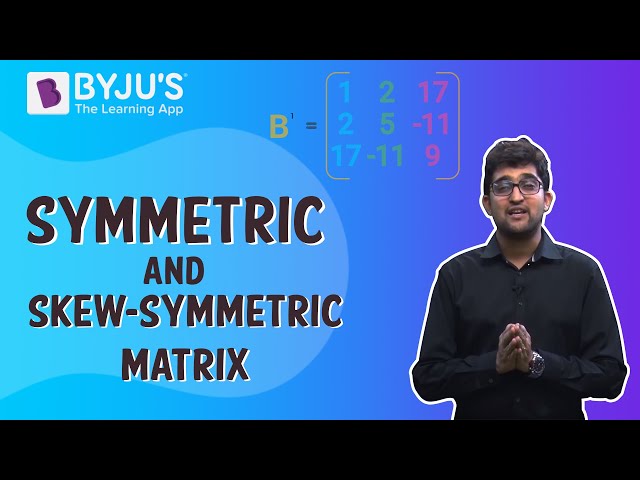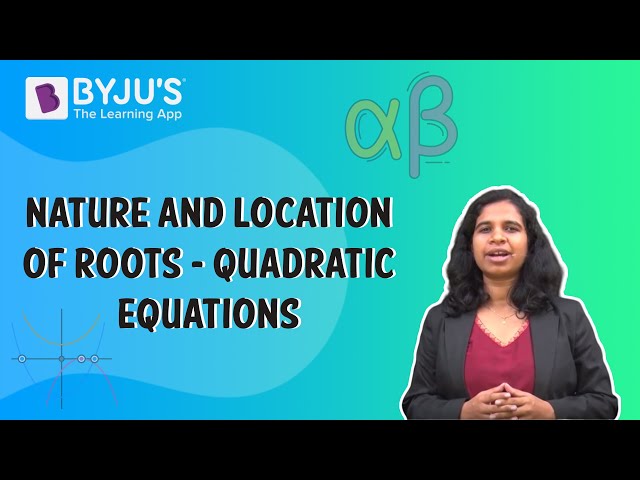KVPY SX 2016 Maths Paper with Solutions
Question 1. The number of triples (x, y, z) of real numbers satisfying the equation x4 + y4 + z4 + 1 = 4 xyz is
a) 0
b) 4
c) 8
d) more than 8
Answer: (b)
Given, x4 + y4 + z4 + 1 = 4xyz ……. (i)
Since, x4, y4, z4, 1 are positive real numbers.
∴ Using A. M. ≥ G.M.
i.e.
⇒
⇒ xyz ≥ |xyz| {using (i)}
⇒ {xyz ≥ 0 ∵ x ≥ |x|, when x ≥0}
⇒ A.M. = G.M.
∴ The numbers will be equal.
i.e. x4 = y4 = z4 = 1
⇒ x = 1, y = 1, z = 1 also xyz ≥ 0
∴ (x, y, z) = (1,1,1), (1,–1,–1), (–1,1,1), (–1, 1, –1)
Thus, the required numbers of triplets are 4.
Question 2. If P(x) be a polynomial with real coefficients such that P(sin2x) = P(cos2x), for all x ∈ [0, π/2]. Consider the following statements:
I. P(x) is an even function.
II. P(x) can be expressed as a polynomial in (2x – 1)2.
III. P(x) is a polynomial of even degree.
Then,
a) all are false.
b) only I and II are true.
c) only II and III are true.
d) all are true.
Answer: (c)
Given, P(sin2x) = P (cos2x); x ∈ [0, π/2]
⇒ P(sin2x) = P (1–sin2x); x ∈ [0, π/2]
⇒ P(x) = P (1–x); x ∈ [0, 1]
Replace: x → x + ½
⇒
⇒ P(x) is symmetrical about x = ½
⇒ P(x) will have even number of solutions in [0, 1]
OR
P(x) is even degree polynomial.
Therefore, statements (II) and (III) are true.
Clearly, P(x) is not an even function.
Therefore, statement (I) is false.
Question 3. For any real number r, let, Ar = {eiπrn: n is a natural number} be a set of complex numbers. Then,
a) A1, A1/𝜋, A0.3 are all infinite sets.
b) A1 is a finite set and A1/𝜋, A0.3 are infinite sets.
c) A1, A1/𝜋, A0.3 are all finite sets.
d) A1, A0.3 are finite sets and A1/𝜋 is an infinite set.
Answer: (d)
Given, A
A1 = {ein𝜋 : n∈N}
= { ein𝜋 = cos(n π)+isin(n π):n ∈ N}

Question 4. Number of integers k for which the equation x3 – 27x + k = 0 has at least two distinct integer roots is –
a) 1
b) 2
c) 3
d) 4
Answer: (b)
Let, f(x) = x3–27x
⇒ f’(x) = 3 (x2–9) = 0
⇒ x = +3, –3

Now, for f(x) = –k, to have at least two distinct roots k ∈ [–54, 54] …… (1)
Again, x3 – 27x + k = 0, has two distinct integral roots and sum of roots is zero. Therefore, third root has to be integer.
Let, the roots be α, β, –( α + β)
Also, ∑αβ = –27
⇒ α β + α (α + β) – β ( α + β) = –27
⇒ α2+ α β + β 2 = 27, α β ∈ I
∴ (α, β) ∈ {(–6,3), (–3–3), (–3,6), (3,–6), (3,3), (6,–3)} ..…. (2)
Again, ∏ α = –k
⇒ α . β (–(α + β)) = –k
⇒ α β (α + β) = k …… (3)
From eq. (1), (2) and (3)
The only possible values of ‘k’ are ±54.
Question 5. Suppose the tangent to the parabola y = x2 + px + q at (0, 3) has slope –1. Then p + q equals
a) 0
b) 1
c) 2
d) 3
Answer: (c)
Given, y = x2 + px + q
Point (0, 3) lies on the curve.
∴ 3 = 0 + 0p + q
⇒ q = 3 …. (i)
Also, slope of tangent at (0,3) = –1
⇒
⇒ 2(0) + p = –1
⇒ p = –1 ……(ii)
⇒ p + q = –1 + 3 = 2 {Using eq. (i) and (ii)}
Question 6. Let O = (0, 0); let A and B be points respectively on x-axis and y-axis such that
∠OBA = 60°. Let D be a point in the first quadrant such that OAD is an equilateral triangle. Then the slope of DB is –
a) √3
b) √2
c) 1/√2
d) 1/√3
Answer: (d)

Slope of BD = [(3a/2) – a)]/( √3a/2 – 0)
= 1/ √3
Question 7. Suppose the parabola (y – k)2 = 4 (x – h), with vertex A, passes through O = (0, 0) and L = (0, 2). Let D be an end point of the latus rectum. Let the y-axis intersect the axis of the parabola at P. Then ∠PDA is equal to
a)
b)
c)
d)
Answer: (b)
Given, (y–k)2 = 4(x–h)
As it passes through O (0,0) and L (0,2),
∴ (0–k)2 = 4(0–h); (2–k)2 = 4(0–h)
⇒ k2 = –4h; (2–k)2 = –4h
On solving, we get
k = 1, h = –1/4
∴ (y–1)2 = 4(x + 1/4) (Given Parabola)
⇒ Y2 = 4aX {where Y = y–1, X = x+1/4 and a = 1}
Ends of latus rectum: (a, ± 2a)
X = x +1/4 = 1 and Y = y–1 = ± 2
⇒ x = 3/4, y = 3, –1
Axis of parabola:
Y = y–1 = 0, which meets y-axis at (0,1)
∴ P (0,1)
Vertex: (0,0)
X = x + ¼ = 0, Y = y–1 = 0
x = –1/4, y = 1
∴ A (–1/4,1)

Now let ∠PDA = α, mPD = 8/3, mAD = 2
tan α = |(2-8/3)/(1+2(8/3))|
α = tan-1(2/19)
Question 8. In a circle with center O, suppose A, P, B are three points on its circumference such that P is the mid-point of minor arc AB.
Suppose when
If ∠AOB is doubled to 2θ, then the ratio
a)
b)
c)
d)
Answer: (a)
Let, radius of circle be unity



Question 9. X = {x ∈ R: cos (sin x) = sin (cos x)}. The number of elements in X is:
a) 0
b) 2
c) 4
d) not finite
Answer: (a)
X = {x ∈ R: cos (sin x) = sin (cos x)}
Now, cos (sinx) = sin (cosx)
⇒
⇒
As L.H.S. ∈[-√2, √2]≠ R.H.S. for any n ∈ I
∴ No Solution.
Question 10. A sphere with center O sits atop a pole as shown in the figure. An observer on the ground is at a distance 50m from the foot of the pole. She notes that the angles of elevation from the observer to points P and Q on the sphere are 30° and 60°, respectively. Then, the radius of the sphere in meters is;

a)
b)
c)
d)
Answer: (c)

Question 11. The graph of the function f(x) = x + 1/8 sin(2πx), 0 ≤ x ≤ 1 is shown below. Define
f1(x) = f(x), fn+1(x) = f(fn(x)), for n ≥ 1

a) I and III only
b) II only
c) I, II, III only
d) I, II, III and IV
Answer: (b)
Now for x1 ∈ (0, 1/2)
f(x1) > x1 as f(x) is concave – downward
Thus, fn → 1/2 as n → ∞
Similarly, for x1 ∈ (1/2, 1)
f(x1) < x1 as f(x) is concave upward
Thus, fn → 1/2 as n → ∞
∴ There are infinitely many values of x in neighborhood of x = 1/2, for which
Question 12. The limit
a) 1/3
b) 2
c) ∞
d) 2/3
Answer: (a)

Question 13. The polynomial equation x3 – 3ax2 + (27a2 + 9)x + 2016 = 0 has
a) exactly one real root for any real a
b) three real roots for any real a
c) three real roots for any a ≥ 0, and exactly one real root for any a < 0
d) three real roots for any a ≤ 0, and exactly one real root for any a > 0
Answer: (a)
Given, f(x) = x3–3ax2 + (27a2+9) x + 2016
f’(x) = 3x2– 6ax + 27a2 + 9
= 3(x2–2ax+a2) + 24a2+9
= 3 (x–a)2 + 24a2 + 9 > 0
⇒ f(x) is strictly increasing odd degree polynomial.
∴ f(x) has only one real root.
Question 14. The area of the region bounded by the curve y = |x3 – 4x2 + 3x | and the x-axis, 0 ≤ x ≤ 3, is:
a) 37/6
b) 9/4
c) 37/12
d) 0
Answer: (c)

Question 15. The number of continuous function f : [0, 1] → [0, 1] such that f(x) < x2 for all x and
a) 0
b) 1
c) 2
d) infinite
Answer: (a)
Given,
f: [0,1] → [0,1] and f(x) < x2
⇒
⇒
But,
∴ No such function exists.
Question 16. On the real line R, we define two functions f and g as follows:
f (x) = min{x – [x], 1 – x + [x]}
g (x) = max{x – [x], 1 – x + [x]}
Where [x] denotes the largest integer not exceeding x. The positive integer n for which
a) 100
b) 198
c) 200
d) 202
Answer: (c)

Now f(x) = max.({x}, 1-{x})

g(x) = min.({x}, 1-{x})

Now,
⇒
⇒
⇒ n = 200
Question 17. Let
a) (0, 1]
b) (1, 2]
c) (2, 3]
d) (3, 4]
Answer: (c)
Given,
V
∴ V is Circum-Centre of ∆ABC.
Let,
Again, |VA| = |VB| = |VC|
⇒ (x, y) = (3/2, 3/2)
⇒
⇒
Question 18. A box contains b blue balls and r red balls. A ball is drawn randomly from the box and is returned to the box with another ball of the same color. The probability that the second ball drawn from the box is blue is –
a)
b)
c)
d)
Answer: (a)

Required probability = (ii) + (iv)
= [r/(b+r)][b/(r+b+1)] + [b/(b+r)] [(b+1)/(r+b+1)]
= b/(b+r)
Question 19. The number of non-congruent integer-sided triangles whose sides belong to the set {10, 11, 12, …., 22} is:
a) 283
b) 446
c) 448
d) 449
Answer: (c)
The sides so picked must satisfy triangle in-equalities, i.e.
i) Sum of two sides > Third side
ii) Difference of two sides < Third side
Now,
No. of scalene triangles = 13C3 –3; {(10, 11, 21), (10, 11, 22), (10, 12, 22)}
= 283 .…. (1)

= 152 ..… (2)
No. of equilateral triangles = 13C1 = 13 ….. (3)
From (1), (2) and (3)
∴Total no. of triangles = 448
Question 20. Suppose we have to cover the xy-plane with identical tiles such that no two tiles overlap and no gap is left between the tiles. Suppose that we can choose tiles of the following shapes; equilateral triangle, square, regular pentagon, regular hexagon. Then the tiling can be done with tiles of
a) all four shapes
b) exactly three of the four shapes
c) exactly two of the four shapes
d) exactly one of the four shapes
Answer: (b)
If we are tiling a plane with congruent regular polygons, there must be n polygons meeting at each vertex. Thus, the interior angles of each polygon must be 2π/n, for some positive integer n.
For n=3, we get polygons with angles of 2π/3, which are regular hexagons. This tiling has three regular hexagons meeting at each vertex.
For n=4, we get polygons with angles of 2π/4 = π/2, which are squares. This tiling has four squares meeting at each vertex.
For n=5, the polygons would need to have angles of 2π/5. This is not possible for a regular polygon.
For n=6, the polygons would need to have angles of 2π/6 = π/3, which are equilateral triangles. This tiling has six triangles meeting at each vertex.
For n>6, the polygons would need to have angles less than π/3, which is impossible.
Question 21. The remainder when the polynomial 1 + x2 + x4 + x6 + …. + x22 is divided by 1 + x + x2 + x3 + …. + x11 is
a) 0
b) 2
c) 1 + x2 + x4 + …. + x10
d) 2(1 + x2 + x4 + …. + x10)
Answer: (d)


Question 22. The range of the polynomial p(x) = 4x3 – 3x as x varies over the interval (-1/2, 1/2) is
a) [–1, 1]
b) (–1, 1]
c) (–1, 1)
d) (-1/2, 1/2)
Answer: (c)
Given, p(x) = 4x3 – 3x
p’(x) = 12x2 – 3
= 3(4x2–1) < 0 ∀x ∈ (-1/2, 1/2)
⇒ p(x) is strictly decreasing function in (-1/2, 1/2)
⇒ Range of p(x) ∈((P1/2), P(–1/2) )
⇒ Range = (–1,1)
Question 23. Ten ants are on the real line. At time t = 0, the k-th ant starts at the point k2 and travelling at uniform speed, reaches the point (11 – k)2 at time t = 1. The number of distinct times at which at least two ants are at the same location is
a) 45
b) 11
c) 17
d) 9
Answer: (c)
Velocity of kth ant =
Position of kth ant starting from k2,
xk = k2 + (121–22k) t
Now, let kth and pth ant meet after time ‘t’.
⇒ xk = xp
⇒ k2 + (121–22k) t = p2 + (121–22p) t
⇒ k2–p2 = 22t (k–p)
⇒ t = k + p/22
Here, k p ∈{1, 2,…..,10} and k ≠ p
∴ t ∈
i.e. 17 distinct values of ‘t’ at which at least two ants are at same position.
Question 24. A wall is inclined to the floor at an angle of 135°. A ladder of length ℓ is resting on the wall. As the ladder slides down, its mid-point traces an arc of an ellipse. Then the area of the ellipse is

a) πℓ2 / 4
b) πℓ2
c) 4πℓ2
d) 2πℓ2
Answer: (a)

Mid-point, M (h, k) =
⇒ 2h = x1–x2; 2k = x2
⇒ x1= 2h + 2k, x2 = 2k
Also, AB = ℓ
⇒ AB2= ℓ2
⇒ (x1+x2)2 + x22 = ℓ2
⇒ (2h+4k)2 + (2k)2 + ℓ2
⇒ 4h2 + 20k2 + 15hk = ℓ2
⇒
{Area of Ellipse, ax2 + bxy + cy2= 1 is
∴ Required area =
Question 25. Let AB be a sector of a circle with center O and radius d,
a) 1/2
b) θ/2
c)
d)
Answer: (d)

In ∆OBD,
OD = d cos θ; BD = d sinθ, ED = ½ BD = ½ d sinθ …….(1)
In ∆OCD,
OC = OD sec ϕ d cos θ sec ϕ, CD = OD tan ϕ = d cos θ tan ϕ …. (2)
In ∆CEF,
EC = CF sinϕ
= (OF – OC) sinϕ
= (d – d cos θ sec ϕ) sinϕ {Using (2)}
= d (sinϕ – cos θ tan ϕ) ……(3)
Also, ED = EC + CD {using (1), (2) and (3)}
⇒ ϕ = sin–1
Now,
Question 26. Let f(x) be a non-negative differentiable function on [0, ∞) such that f ‘(0) = 0 and f ‘ (x) ≤ 2f(x) for all x > 0. Then, on [0, ∞)
a) f(x) is always a constant function
b) f(x) is strictly increasing
c) f(x) is strictly decreasing
d) f ‘(x) changes sign
Answer: (a)
Given, f’(x) ≤ 2f(x) ∀ x ≥ 0
Multiplying both sides by e–2x
⇒ e–2x f’(x) ≤ 2e–2x f(x)
⇒ e–2x f’(x) – 2e–2x f(x) ≤ 0
⇒ d/dx (e–2xf(x)) ≤ 0
⇒ g(x) = e–2xf(x) is decreasing function ∀ x ≥ 0
⇒ g(0) ≥ g(x) ; x ≥ 0
⇒ e–0f(0) ≥ e–2xf(x) ; x ≥ 0
⇒ f(x) e–2x ≤ 0 ; x ≥ 0 {∵ f(0)=0 }
⇒ f(x) ≤ 0 ; x ≥ 0 {e–2x ≠0}
Also, f(x) ≥ 0 ∀ x ≥ 0 {given}
∴ f(x) = 0 ∀ x ≥ 0
A constant function.
Question 27. For each positive real number λ, let Aλ be the set of all-natural numbers n such that |sin√(n+1) – sin √n| < λ. Let Aλc be the complement of Aλ in the set of all-natural numbers. Then –
a) A1/2, A1/3, A2/5 are all finite sets
b) A1/3 is a finite set but A1/2, A2/5 are infinite sets
c) A1/2c, A1/3c, A2/5c are all finite sets
d)A1/3, A2/5 are finite sets and A1/2 is an infinite set
Answer: (c)
As n →∞, |sin √(n+1) –sin (√n)| → 0
⇒ There exist infinite natural numbers ‘n’ such that:
|sin √(n+1) –sin (√n)| <λ, ∀ λ > 0
∴ A1/2, A1/3, A2/5 are all infinite sets.
Question 28. Let f be a continuous function defined on [0, 1] such that
a) has exactly two points
b) has more than two points
c) is the interval [0, 1]
d) is a singleton
Answer: (d)

Question 29. Three schools send 2, 4 and 6 students, respectively, to a summer camp. The 12 students must be accommodated in 6 rooms numbered 1, 2, 3, 4, 5, 6 in such a way that each room has exactly 2 students and both from the same school. The number of ways, the students can be accommodated in the rooms is –
a) 60
b) 45
c) 32400
d) 2700
Answer: (c)

Question 30. Let a be a fixed non-zero complex number with |a| < 1 and ω =
a) there exists a complex number z with |z| < 1 such that |ω| > 1
b) |ω| > 1 for all z such that |z| < 1
c) |ω| < 1 for all z such that |z| < 1
d) there exists z such with |z| < 1 and |ω| = 1
Answer: (c)

Video Lessons – KVPY-SX 2016 – Maths




Comments